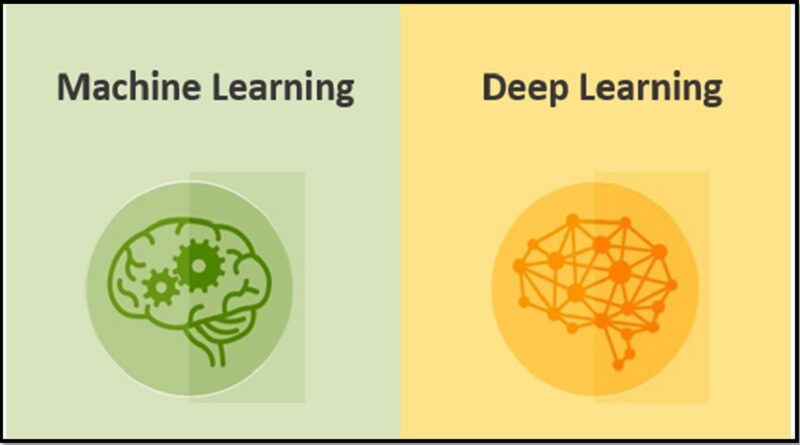Basic difference between Machine Learning and Deep Learning
Machine Learning and Deep Learning :
It is appropriate that the parallel realities offered by the metaverse paint an upbeat future while reality post-Covid-19 becomes more and more burdened with economic, geopolitical, and social headwinds. A global technological gold rush has been sparked by the metaverse’s potential to revolutionise entertainment, employment, commerce, and social life; yet, much has to be learned about its potential effects on healthcare.
The Experience Of Healthcare Reimagined
Despite the metaphorical metaverse’s numerous layers, it may be summed up as an online environment that is exponentially more experienced, interactive, and distinguished by its immersive nature rather than one that is gradually more of these things. It stands for the “second coming of the internet,” a reinvention that is enhanced and created with components of hyperconnectivity, augmented and virtual reality, and artificial intelligence.
These technological foundations in healthcare have the potential to completely rethink the doctor-patient relationship and have already proven to be incredibly beneficial as care has developed over the past ten years. Even before the phrase “metaverse” was invented, physical therapy, cognitive therapy, and rehabilitation were all being practised. The Metaverse, Web 3.0, and all the other futuristic technologies are now supporting our ability to provide care, much like Max Goodwin in New Amsterdam: “How can I help?”
How the Metaverse Can Be Useful
Due to the walled structure of current healthcare models, the convergence of these new-age technologies will free healthcare providers to provide a range of highly integrated, deliberate, and personalised care. The speed of communication between doctors and patients, as well as between doctors, allows for hitherto unheard-of levels of sophistication in prevention, diagnosis, and treatment—the traditional primary components of healthcare delivery.
Our appetites for remote treatment have been whetted by the pandemic-driven uptake of telemedicine, and many long for what lies beyond this ceiling. The metaverse offers the possibility of Telemedicine 2.0 with a cutting-edge, virtual reality-enhanced doctor-patient interaction. In reality, such instruments have a long history of usage in the treatment of mental diseases using virtual stimuli. This additional level of immersion could greatly boost the effectiveness of both diagnostic and therapeutic efforts.
The ability to create “digital twins” in the virtual world, or digital representations of people, offers precision medicine and a greater capacity for personalised study. These “guinea pigs” can help us grasp each person’s unique physiological, psychological, and pharmacological profiles with great detail. Through simulated medical tests, they enable precise scientific investigation by predicting how our bodies will respond in the future to a variety of situations. By enabling us to viscerally restructure our pain-pleasure incentive structures and see and feel the impacts of our health (mis)behaviors, this glimpse through the looking glass has the potential to transform preventative care.
So what happens to hospitals?
Even though there will probably always be physical hospitals, there is now a race to develop an integrated virtual reality medical setting that is accessible through a headset. The first medical facility in the metaverse has been launched by the hospital chain Aster DM Healthcare in the UAE, in keeping with Dubai’s goal to become the world’s metaverse centre. They aim to allow an enhanced and immersive remote doctor-patient experience through the full-scale launch of their hospitals on Web 3.0.
At GITEX 2022, the largest startup & Unicorn exhibition worldwide, Dr. Shanila Laiju, CEO of Medcare Hospitals affirmed her belief that traditional telemedicine services will be replaced by a more tangible and creative service in the metaverse. Similarly, a diversified international business conglomerate known as the Thumbay group had announced plans to create a full-fledged virtual hospital in the metaverse to provide patients with an immersive healthcare experience. The race is indeed on.
Virtual Reality or Reality Check?
The revolution of the healthcare sector is probably going to meet a lot of obstacles, even though the path to the metaverse is paved with good intentions. The (very) vast majority of people on Earth cannot access many of these technologies because of pervasive economic disparities. Furthermore, the logistical details necessary to make this new form of care work are still a mystery to us. We still don’t know how healthcare consumers will be drawn to the metaverse, how it will interact with actual healthcare requirements, or how we’ll link patients up with the virtual world. Will VR headsets eventually replace smartphones?
Additionally, the traditionally unwieldy healthcare sector, which is supported by history and heritage, will need to rethink its business models to conform to new forms of care. In a world where the widespread acceptance of telemedicine took more than 20 years and a pandemic to trigger, reimbursements, insurance, and distant therapies will need to be overhauled.
Nothing Attempted, Nothing Accomplished
Despite these obstacles, we must be enthusiastic about this ground-breaking technology because it has the potential to drastically improve healthcare. Anything that might transcend geographical boundaries, enhance patient care globally, and advance human health is a prospect worth investigating. That is the truth.
Since AI is the most fundamental type of decision-making, we won’t get too technical here and instead instead focus on the essential distinctions between ML and DL.
My previous articles have also described a generic AI system as a transformation function. Be it ML or DL, it is ultimately trying to find an optimal transformation function, which is usually described by its independent variables and coefficients
When it comes to ML algorithms, it requires a human to decide what family of functions to use for transforming inputs into outputs. Once the function is decided, computers are used to find the optimal coefficients within this family to best map inputs to outputs. Finding the optimal coefficients from inputs is called learning, and since the machine does this following some algorithm, it is called Machine Learning.
The inputs are generally not taken as is. A domain expert extracts what are called features from the input data to reduce redundancy and transform it into a more abstract but compact form before passing it to the optimization process. Since humans are known for their imagination and creativity and that is reflected in the way they would design features and decide on functions, the accuracy of the solution is also human-dependent.
As ML solutions heavily depend on the engineer’s skill to write the solution, they can occasionally function with very little data as well. ML demands that the answer be precisely describable for this reason. The quality of the features and the capability of the function being used for training will mostly determine how accurate the algorithm is, therefore the amount of input data does not significantly affect this process. Numerous jobs can be automated with it, and it occasionally has affordable computing costs. The ML system’s reliance on a person can likewise introduce bias into the conclusion.
DL algorithms on the other hand have the ability to construct features and come up with transformation functions on their own by just knowing the input-output mapping. It is for this reason that NNs are called universal function approximators. All that heavy lifting that they do comes at a cost, and that is data. DL systems learn the solution on their own at the expense of massive amounts of data and humans having to define the problem precisely. Posing the problem in the wrong way creates a wrong solution.
This is exactly why DL systems require the problem to be precisely describable. In order to approximate a transformation function, NN or DL systems use multiple scaled and shifted versions of predefined functions, each one coming as an output of a computation node. The word deep comes from the fact that these nodes can be cascaded in several layers. With this kind of arrangement, they not only learn the coefficients of the function but learn the function as well.
Given the design and data, DL systems are virtually completely independent of the computer, in contrast to ML systems that depend on humans. Here, the arrangement of neurons (or nodes) and their behaviour are essentially the architecture. Even while DL algorithms can do better than humans at a number of specific activities, there is no cure without data. With fewer data, it likewise struggles to generalise, but as the amount of data increases, it greatly improves. The quality of the data utilised can introduce bias into DL systems because they derive their whole answer from the data. A DL system’s features and functions are always at their best when given the correct data and a clear explanation of the issue.
For More IT Articles Click Here




